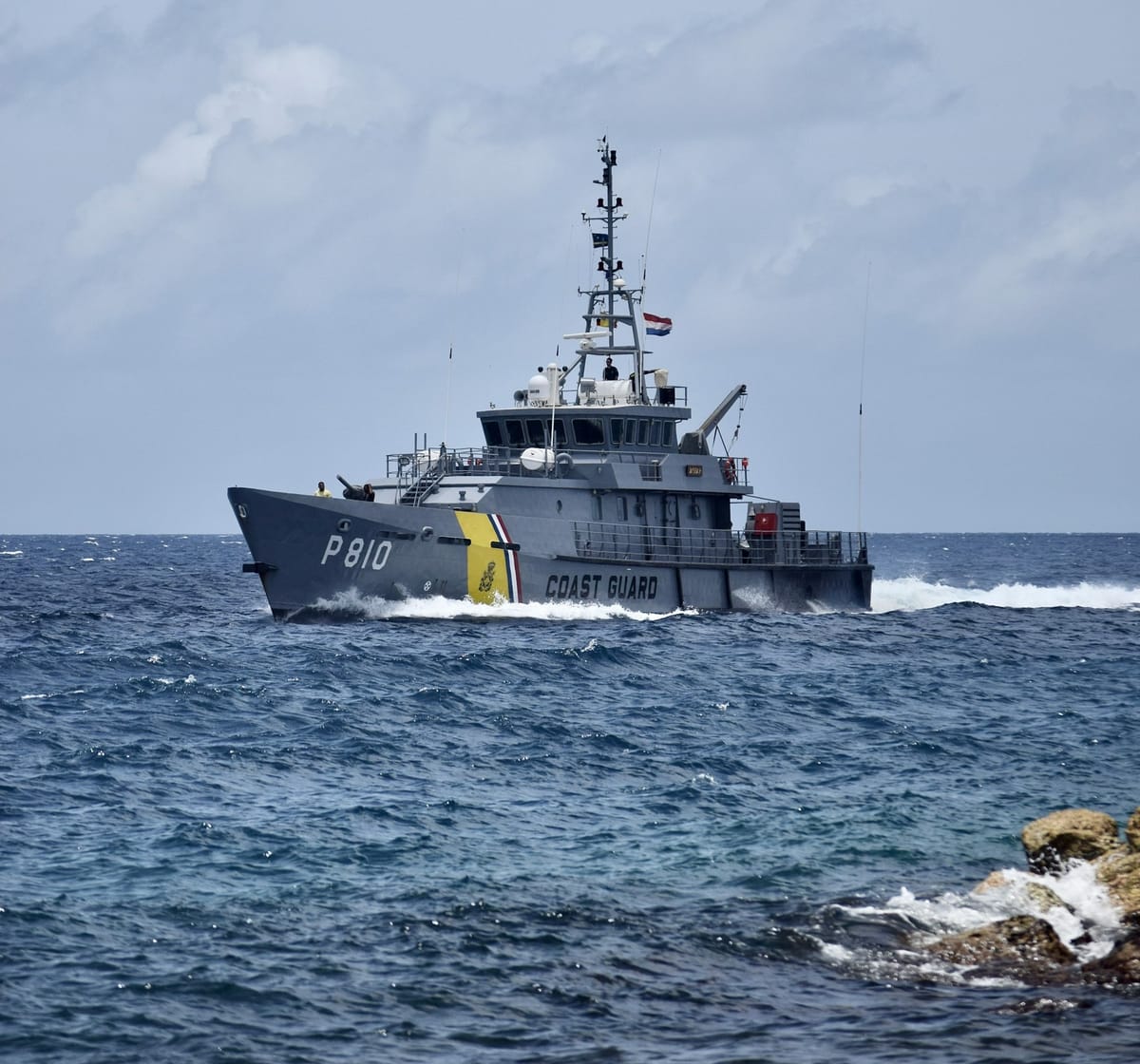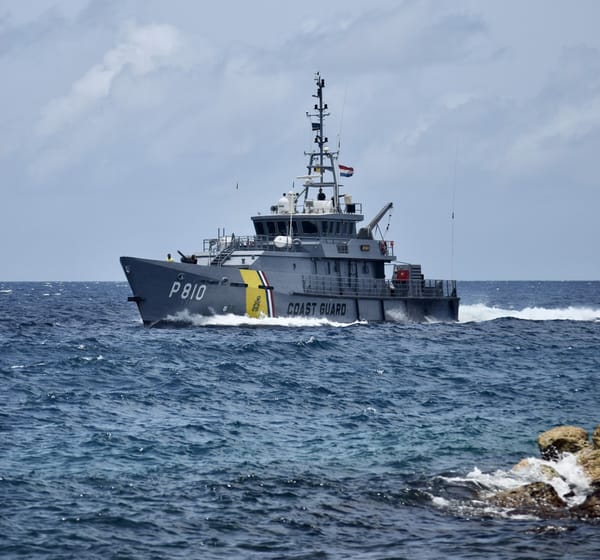U.S. Army Cyber Divisions and Psychological Operations Units: A Comprehensive Overview

Introduction
As cyberspace has emerged as the fifth warfighting domain alongside land, sea, air, and space, the U.S. Army has developed a sophisticated organizational structure to conduct operations in this critical realm. From offensive cyber operations to defensive network protection, and from psychological operations to information warfare, the Army has established specialized units to maintain dominance across the entire spectrum of cyber and information operations.
This comprehensive overview examines all major Army cyber divisions and psychological operations units, their missions, capabilities, and organizational structures as of 2025.

U.S. Army Cyber Command (ARCYBER)
U.S. Army Cyber Command (ARCYBER) was established on October 1, 2010, and serves as the Army service component command of United States Cyber Command. The command integrates and conducts cyberspace operations, electromagnetic warfare, and information operations as the Army's single point of contact for external organizations regarding information operations and cyberspace.
All 41 of the Active Army's cyber mission force teams reached full operational capability by September 2017. The cyber mission force teams are composed of a defensive component, denoted cyber protection teams (CPTs), and an offensive component. In addition, 21 CPTs are being readied in the Reserve component.
Mission: ARCYBER conducts information dominance and cyberspace operations to ensure freedom of action for friendly forces in and through the cyber domain and the information environment, while denying the same to adversaries.
Headquarters: Fort Eisenhower, Georgia (formerly Fort Gordon)
Major Cyber Divisions and Units
1. 780th Military Intelligence Brigade (Cyber) - "Praetorian Brigade"
The 780th Military Intelligence Brigade conducts cyberspace operations to deliver effects in support of Army and Joint requirements. The 780th MI BDE is the only offensive cyberspace operations brigade in the U.S. Army. Activated on October 1, 2011, as a Major Subordinate Command under the U.S. Army Intelligence & Security Command, while also serving under the operational control of U.S. Army Cyber Command.
Key Subordinate Units:
- 781st Military Intelligence Battalion (Cyber) - "Vanguard Battalion"
- 782nd Military Intelligence Battalion (Cyber) - "Cyber Legion"
- 11th Cyber Battalion - activated on October 16, 2022
- Task Force Praetorian - established in November 2022, headquartered at Fort Meade
Location: Fort George G. Meade, Maryland
Mission: The brigade hosts expeditionary cyber capability to assist Army units in defense of their networks, with teams forward deployed to support brigade combat teams in securing their networks.

2. Army Cyber Protection Brigade - "Hunter Brigade"
The U.S. Army Cyber Protection Brigade (CPB) -- the "Hunter" brigade -- hunts advanced adversaries to enable information advantage in multi-domain operations. The CPB's mission is to defend key terrain in cyberspace to deter threats and deliver effects that ensure freedom of action for friendly forces while denying the same to adversaries.
Designated as one of two U.S. Army cyber brigades in June of 2014, the CPB began defensive cyber operations and employed Cyber Protection Teams in support of Joint Force and Army priorities worldwide.
Key Subordinate Units:
- 1st Cyber Battalion - includes Cyber Protection Team 155
- 2nd Cyber Battalion - "Sentinels"
- Raptor Detachment - activated April 15, 2021
Location: Fort Eisenhower, Georgia, with detachments at Fort Huachuca, Arizona
Mission: The "Hunter" brigade mans, trains and equips Cyber Protection Teams that deploy worldwide to support network defenders safeguarding systems and data; provides defensive readiness assessments and assistance; hardens friendly networks; and conducts defensive cyber operations.
3. Army Network Enterprise Technology Command (NETCOM)
United States Army Network Enterprise Technology Command (NETCOM) is a US Military unit subordinate to United States Army Cyber Command. NETCOM's mission is to operate and defend the computer networks of the United States Army. NETCOM leads global operations for the Army's portion of the DoDIN, ensuring freedom of action in cyberspace while denying the same to our adversaries in support of multi-domain operations.
Its heritage can be traced back to the creation of the 9th Service Company in 1918. The command headquarters is at Fort Huachuca, Arizona. Major General Jacqueline D. McPhail assumed command of NETCOM in August 2024.
Mission: NETCOM plans, engineers, installs, integrates, protects and operates Army Cyberspace, enabling Mission Command through all phases of Joint, Interagency, Intergovernmental and Multinational operations.
Location: Fort Huachuca, Arizona
4. 1st Information Operations Command (Land) - Recently Deactivated
The 1st Information Operations Command (Land) was the Army's only active-duty information operations command until its deactivation on May 8, 2025. The command provided analytical, planning, assessment and training support to Army and joint forces spanning intelligence, cyber and information responsibilities that support multi-domain operations.
The command's achievements included deployment of IO Field Support Teams for dozens of operations and exercises, cyber opposing force support for exercises including rotations at the Army's Combat Training Centers, cyber red team support for the DoD Information Network, and training 3,000 students in IO over two years.
Replacement Structure: The Army is creating three so-called Theater Information Advantage Detachments that will be 65-person teams focused on synchronizing information capabilities at the theater level: one in the Pacific, one in Europe and another that Army Cyber is orienting toward transregional threats.

5. Cyber Military Intelligence Group (CMIG)
The Cyber Military Intelligence Group supports ARCYBER operations, Multi-Domain Operations, and army information advantage by providing intelligence to Cyber Operations, Electronic Warfare, and Information Operations that will enable Information Dominance while operating, defending, and influencing in the Information Dimension.
In 2021, the U.S. Army Intelligence and Security Command stood up the Cyber Military Intelligence Group to support Army and joint forces with specialized holistic information dimension intelligence.
6. 11th Cyberspace Warfare Battalion
In 2019, ARCYBER stood up the 915th Cyberspace Warfare Battalion, now the 11th Cyberspace Warfare Battalion, to provide cyber-electromagnetic activities support to corps and below units. The 11th Cyberspace Warfare Battalion trains and deploys expeditionary cyber and electromagnetic activities teams to augment corps and below units with cyber, electromagnetic warfare and information operations capabilities.
7. 60th Offensive Cyber Operations Signal Battalion
In 2021, ARCYBER activated the 60th Offensive Cyber Operations Signal Battalion to operate and maintain its sophisticated offensive cyberspace infrastructure.

8. 91st Cyber Brigade - "Shadow Brigade"
The 91st Cyber Brigade is the Army National Guard's first, and only, cyber brigade. Activated on September 17, 2017, at Fort Belvoir, Virginia, the Virginia National Guard activated the Bowling Green-based 91st Cyber Brigade as the Army National Guard's first cyber brigade. The primary mission of the brigade is to provide training and readiness oversight for cyber units across 30 states, as well as operational command and control when needed. The brigade is a strategic asset to U.S. Cyber Command and Army Cyber Command.
Key Facts:
- Also known as the "Shadow Brigade"
- Commands approximately 950 traditional status Army National Guard officers, warrant officers and enlisted Soldiers across units in 30 states
- The brigade was reflagged from the 91st Troop Command
- Currently mobilizes a battalion a year for Task Force Echo at Fort Meade, Maryland
Subordinate Battalions:
- 123rd Cyber Protection Battalion (Fairfax, Virginia area)
- 124th Cyber Protection Battalion (Fairfax, Virginia area)
- 125th Cyber Battalion (Columbia, South Carolina)
- 126th Cyber Battalion (Hanscom Air Force Base, Bedford, Massachusetts)
- 169th Cyber Protection Team (all-AGR CPT under direct brigade control)
Location: Bowling Green, Virginia
Mission: Each cyber protection battalion has four subordinate units: a cyber security company, a cyber warfare company, and two cyber protection teams. The Cyber Protection Teams are largely focused on Department of Defense information networks, while Cyber Warfare Companies focus on the full spectrum of cyber security threats, and Cyber Security Companies focus on civilian networks.

9. U.S. Army Reserve Cyber Protection Brigade
The U.S. Army Reserve Cyber Protection Brigade is subordinate to the 335th Signal Command (Theater). The USAR-CPB is charged with providing trained and ready Cyber Protection Teams (CPTs) to conduct Cyberspace Operations from home station or on location in support of Army, Combatant Commands, Department of Defense, and Interagency operations worldwide.
Created from the Army Reserve Information Operations Command in October 2016 as the formerly named Army Reserve Cyber Operations Group, the cyber unit was charged with building its force through readiness and advanced cybersecurity training to perform cyber missions in support of Army Cyber Command.
Key Facts:
- The Nation's only Army Reserve Cyber Brigade
- Provides key competency core for Regional Cyber Center operations
- Army Reserve detachments provide support for major operations conducted during deployments
Subordinate Units (Cyber Protection Centers):
- Northeast Cyber Protection Center (Fort Devens, Massachusetts)
- North Central Cyber Protection Center (Coraopolis, Pennsylvania)
- Western Cyber Protection Center
- Additional detachments supporting global operations
Location: Near College Park, Maryland (Army Research Laboratory area)
Mission: The brigade provides trained and ready Cyber Protection Teams to conduct defensive cyberspace operations worldwide, with particular focus on augmenting Regional Cyber Centers and supporting combatant command requirements.

Psychological Operations Units
The Army maintains extensive psychological operations capabilities through specialized units designed to influence foreign audiences and support U.S. policy objectives.
4th Military Information Support Group (Airborne) - "Praetorians"
The 4th Psychological Operations Group (Airborne) or 4th POG(A) is one of the United States Army's active military information support operations units. The 4th Group has responsibility for the 1st, 5th, 6th, 7th, and 8th battalions. On 21 June 2010, an announcement was made that the military intends to rename psychological operations, or PSYOP, to Military Information Support Operations. By October 2017, the U.S. Army Special Operations Command reverted its decision changing their name back to PSYOP.
Mission: The fundamental mission of the Psychological Operations Branch has remained the same since World War I: to "convey selected information and indicators to foreign audiences to influence their emotions, motives, objective reasoning, and ultimately the behavior of foreign governments, organizations, groups and individuals."
Motto: "Verbum Vincet" ("The Word Will Conquer")
Location: Fort Liberty, North Carolina (formerly Fort Bragg)
Subordinate Battalions:
- 1st Psychological Operations Battalion (Airborne)
- 3rd Psychological Operations Group (Airborne) (Dissemination)
- 5th Psychological Operations Battalion (Airborne) - Pacific Command support
- 6th Psychological Operations Battalion (Airborne) - European Command support
- 7th Military Information Support Battalion
- 8th Psychological Operations Battalion (Airborne)

8th Military Information Support Group (Airborne)
The 8th Psychological Operations Group (Airborne), which was activated 26 August 2011 at Fort Bragg. The 8th Group has responsibility for the 3rd and 9th Psychological Operations battalions.
Location: Fort Liberty, North Carolina
Subordinate Units:
- 3rd Military Information Support Battalion (Dissemination Battalion)
- 9th Military Information Support Battalion (Tactical Battalion)
Mission: Regional PSYOP Battalions are regionally oriented and support the Regional Combatant Commands in the planning and production of PSYOP programs.
Reserve Component PSYOP Units
Today, fully 74 percent of the US Army's Psychological Operations force is assigned to the US Army Civil Affairs and Psychological Operations Command (USACAPOC), a component of the Army's Reserve force structure. These Reserve PSYOP units provide the bulk of tactical/operational PSYOP units deployed in support of US Army divisions, brigades, and battalions.
Major Reserve Units:
- 2nd Psychological Operations Group
- 7th Psychological Operations Group

Information Operations and Influence Units
Beyond traditional psychological operations, the Army maintains several specialized information operations and influence units that operate across all three components.
U.S. Army Civil Affairs & Psychological Operations Command (USACAPOC)
The United States Army Civil Affairs and Psychological Operations Command (Airborne), USACAPOC(A), or CAPOC was founded in 1985 and is headquartered at Fort Liberty, North Carolina (formerly Fort Bragg). USACAPOC(A) is composed mostly of U.S. Army Reserve Soldiers in units throughout the United States. The size of the Command is nearly 13,500 Soldiers, which is 76% of the Department of Defense's Civil Affairs forces and 63% of Psychological Operations forces.
Mission: United States Army Civil Affairs and Psychological Operations Command (U.S. Army Reserve) supports the Army and Joint Force with strategic, operational, and tactical civil affairs, military information support, and information operations capabilities across the range of military operations.
Key Facts:
- Provides Army and Joint Forces commanders 82 percent of the DoD civil affairs forces and 83 percent of the DoD's psychological operations forces
- USACAPOC constitutes 5% of the U.S. Army Reserve's total force, but account for approximately 20% of Army Reserve deployments
- The command's Soldiers bring civilian expertise and education that is typically not found among active-duty soldiers
Location: Fort Liberty, North Carolina

151st Theater Information Operations Group
The 151st Theater Information Operations Group (151st TIOG) is the only Theater Information Operations Group in the U.S. Army Reserve. Founded in 2009, it's composed mostly of Army Reserve Soldiers in two battalions based out of Parks Reserve Forces Training Area (Camp Parks), Fort George G. Meade, and Fort Totten. The command's Soldiers bring civilian expertise, education, and qualifications not found among regular active duty Soldiers.
Mission: The 151st TIOG primary mission is on order, to deploy modular and tailorable Information Operations forces worldwide in order to gain and maintain information dominance by conducting Information Warfare operations in the Information Environment.
Key Facts:
- Regionally aligned and globally engaged, the 151st TIOG is the U.S. Army Reserve Information Operations force provider to primarily USEUCOM, USAFRICOM, USCENTCOM, USSOUTHCOM, and United States Cyber Command
- In October 2015, the 151st TIOG was realigned to the U.S. Army Civil Affairs and Psychological Operations Command (Airborne) (USACAPOC(A))
- Information Operations soldiers have been integral to U.S. missions across North West Africa, East Africa, Europe, Middle East, and various other locations
Location: Fort Totten, New York (headquarters)
Unit Motto: "Nos Memor" - "We Remember" (The unit crest displays the Twin Towers with this banner in remembrance of 9/11)
71st Theater Information Operations Group
The 71st Theater Information Operations Group (Texas Army National Guard) deploys modular teams to provide IO planning, synchronization, execution, and assessment capabilities to designated Army Service Combatant Commanders and TXMF to support the employment of information as an element of combat power across the range of military operations.
Mission: Deploy modular teams to provide IO planning, synchronization, execution, and assessment capabilities to designated Army Service Combatant Commanders and the Texas Military Forces (TXMF) to support the employment of information as an element of combat power across the range of military operations. Additionally, provide OPSEC and vulnerability assessment training, assistance and planning support for TXMF during pre-deployment, redeployment and in garrison.
Key Facts:
- Originally constituted 24 October 2001 in the Texas Army National Guard as IO FSU #1
- 14 August 2001: reorganized as the 49th Information Operations Group headquartered at Camp Mabry, Austin
- 1 October 2008: the 49th IO Group was reflagged as the 71st Theater Information Operations Group (TIOG)
- Has deployed to Iraq, Afghanistan, Haiti, Dominican Republic, and El Salvador
Location: Austin, Texas (Camp Mabry)

Subordinate Units:
- 101st Information Operations Battalion
- 102nd General Support Battalion
Unit Motto: "Unseen Dominance"
56th Theater Information Operations Group
The 56th Theater Information Operations Group (Washington Army National Guard) deploys modular teams globally to provide IO planning, synchronization, execution, and assessment capabilities to designated Army Service Component Commanders to support the employment of information as an element of combat power across the range of military operations.
Mission: As one of three TIOGs in the United States Army, the 56th provides information operations planning, synchronization, and assessment support to Army echelons at theater and Army Service Component Command down to brigade level. The 56th and its battalion elements have never deployed as commands but instead form and deploy purpose-built information operations teams designed to provide the support required by requesting commands.
Key Facts:
- Federally recognized on January 28, 2009, as one of the first Theater Information Operations Groups in the U.S. Army
- In July 2015, elevated to a major subordinate command within the Washington Army National Guard
- Regional focus on the Asia-Pacific region
- Operates from a $27 million, 127,100-square-foot Information Operations Readiness Center at Joint Base Lewis-McChord
Location: Joint Base Lewis-McChord, Washington
Subordinate Units:
- 156th Information Operations Battalion
- 110th Information Operations Battalion (Maryland Army National Guard)
- 341st Military Intelligence Battalion (Linguist)
- Company A, 1st Battalion, 19th Special Forces Group (Airborne)
- Special Operations Detachment - Pacific
- 122nd Theater Public Affairs Support Element
Organizational Evolution and Future Transformation
Recent Changes
The Army's cyber and information operations structure has undergone significant transformation in recent years:
- Information Operations Restructuring: The inactivation of the 1st Information Operations Command was declared in February 2024 as part of the Army's plan to fully transition to Multi-Domain Operations by 2030.
- Expanded Cyber Mission Force: All 41 of the Active Army's cyber mission force teams reached full operational capability by September 2017, with an additional 21 CPTs being readied in the Reserve component.
- Joint Integration: Recent exercises like Grungy Zion 24 have demonstrated increased joint integration, with the Army Cyber Protection Brigade working alongside elements from Marine Corps Forces Cyber, Navy mission elements, and Multi Domain Task Force mission elements.
Mission Focus Areas
The Army's cyber and psychological operations units focus on three primary areas:
- Strategic PSYOP: Big-picture efforts with long-term objectives, directed at large audiences or influential individuals and institutions.
- Tactical PSYOP: The "nuts and bolts" operations that specifically target smaller groups and with localized objectives, ranging from inspiring indigenous support to degrading the morale of enemy troops prior to combat action.
- Consolidation PSYOP: Postwar effort directed at "winning the peace," assisting civil and military authorities in consolidating their gains, establish and maintain law and order, and help in the transition to a stable new civil government.
Capabilities and Operations
Cyber Protection Teams (CPTs)
Cyber protection teams are the maneuver units of action for defensive cyberspace operations, hunting for and clearing adversary activity on DoD Information Network networks and building mission defense plans for DoD organizations to ensure effective defense in depth. Cyber protection teams also conduct "hunt forward operations" to bolster ally and strategic partner cybersecurity efforts and identify adversary malware before it affects the DoD Information Network.
Tactical PSYOP Teams (TPTs)
Tactical PSYOP Teams typically consist of a PSYOP team chief, an assistant team chief and a psychological operations specialist who operates the HMMWV's loud speaker and machine gun. Tactical PSYOP Teams will often work with indigenous interpreters who can broadcast messages in the local language.
Media Production Capabilities
The 4th POG's organic media assets include light-to-heavy print production; audio production; amplitude modulated (AM), FM, and shortwave radio broadcasting stations; audiovisual production and dissemination; and tactical loudspeaker dissemination.
Conclusion
The U.S. Army's cyber and psychological operations structure represents a comprehensive approach to information warfare and cyberspace operations. From the offensive capabilities of the 780th Military Intelligence Brigade to the defensive prowess of the active-duty Cyber Protection Brigade, the National Guard's 91st Cyber Brigade, and the Army Reserve Cyber Protection Brigade, the Army has built a Total Force approach to cyber operations.
Combined with the global network operations of NETCOM, the influence operations of the Military Information Support Groups, and the specialized information operations capabilities of the Theater Information Operations Groups across all three components, the Army has developed one of the world's most sophisticated organizational structures capable of operating across the full spectrum of cyber and information operations. The integration of USACAPOC's extensive reserve component capabilities further enhances this Total Force approach, providing the Army with unmatched depth and expertise in civil affairs, psychological operations, and information operations.
As the threat landscape continues to evolve, these units remain at the forefront of defending American interests in cyberspace while projecting power and influence through information operations worldwide. The ongoing transformation to Multi-Domain Operations ensures these capabilities will continue to adapt and evolve to meet future challenges in the fifth warfighting domain.
This article provides a comprehensive overview of Army cyber divisions and psychological operations units as of August 2025, based on official sources and recent organizational changes.















